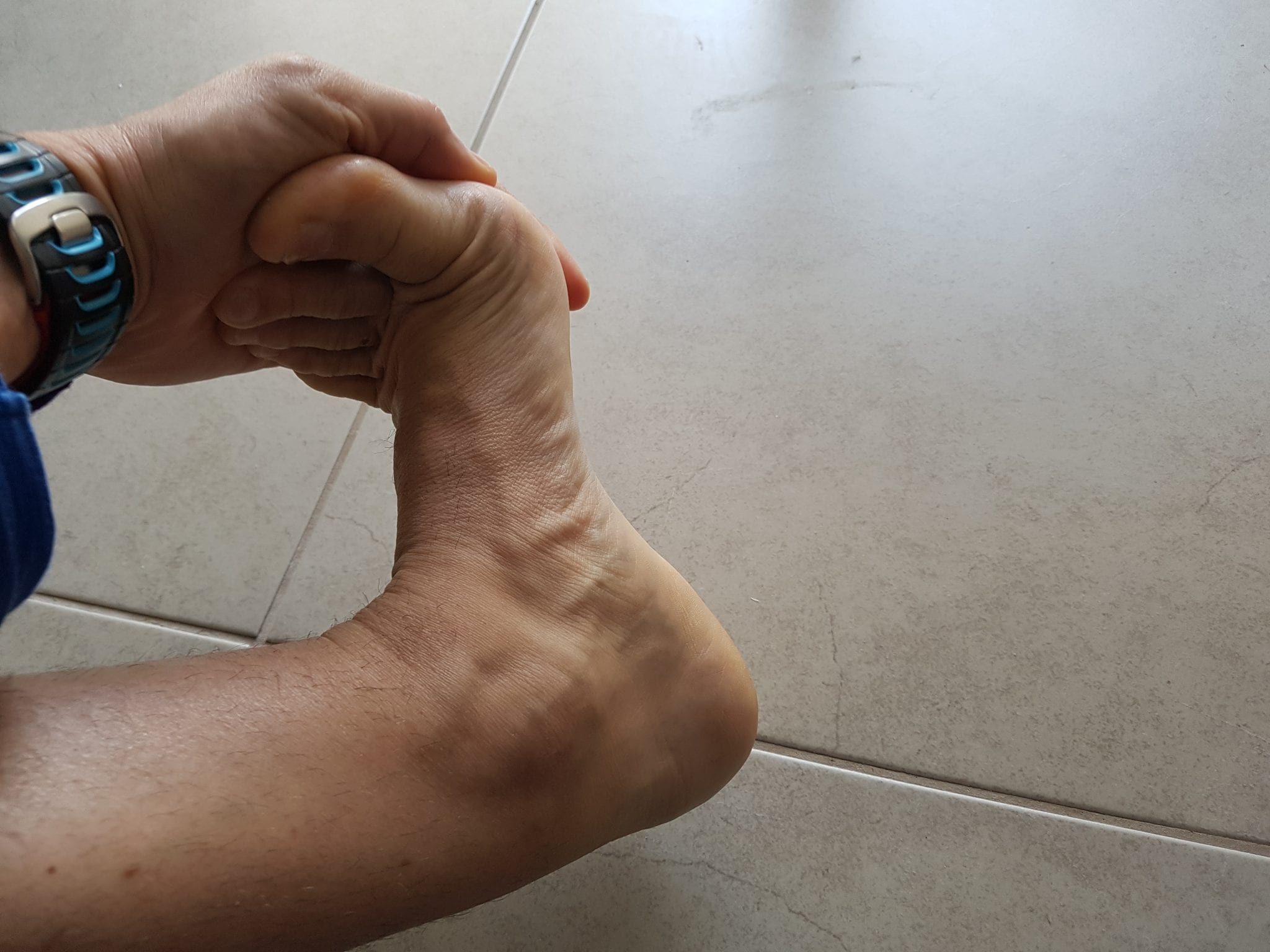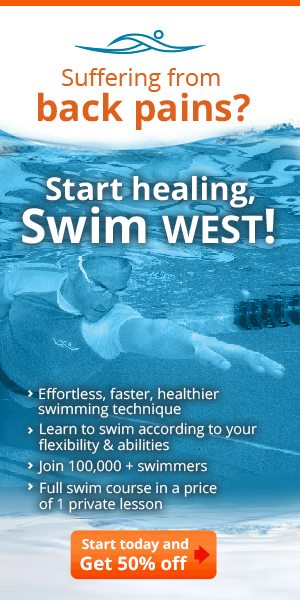How do you treat leg cramps while swimming, amazing flexibility and swimming drills to change your muscles forever in WEST swimming technique.
Many swimmers and triathletes feel cramps in their biceps and feet, a thing which could be quite bothering while swimming. The good news is you can get rid of it using certain simple drills.
This phenomenon, very much akin to what happens to pregnant women, happens mainly after hard legwork, swimming with fins, pushing hard off the wall or even ordinary swimming.
Before we get to the drills it’s important to rule out a number of other things in order to succeed, and that means not only stopping the cramps but elongating the muscle, creating elastic, flexible muscles and swimming with no cramps.
What causes the cramps?
Lack of sleep, Magnesium deficiency, entering the water without a proper warm up or stretching (stretching is done after at least 7 minutes of muscle warm up), heading out to practice without eating or drinking. 50% of the cramps will not happen if you eat and warm up the muscle. The problem is that lack of sleep, stress and tense muscles are a part of our lives, and so we have to do several other things.
A tip Small tip from Olympic swimmer, What do they do before a race to prevent cramps in the competition
We always recommend adding Magnesium to the food, especially before practice. We can find it in nuts, legumes, banana, avocado, soy, tahini, almonds and other foods.
When we’ve eaten correctly before practice and added Magnesium to our diet we will learn how to warm up in a simple way and which muscles we can stretch lightly before practice for only 7 minutes.
Why 7 minutes and not longer? We have seen over the years that when we ask non competitive swimmers to come 30 minutes before practice, 90% don’t show up, 50% show up 15 minutes before, and 7 minutes is an easy time to warm up and stretch in order for 90% of the swimmers to show up (instead of swimming more or not showing up at all).
Drills for a 5 minute warm up and 2 minute stretching
- Hands forwards and backwards – Throw the hands forwards and backwards a little below shoulder height, the hands crossed in front and touch the scapula in the back.
- Bending, straightening and arrow – Hands towards the floor, the knees slightly bent, straighten the legs and stretch your hands up in an arrow.
- Pelvic rotation with hands on hips – Start with small rotations and move on to larger ones. Change sides every 10 seconds.
- Running in place or leg swinging – You can run lightly in place for a minute or swing your leg forward and backward 20cm behind your back, 2 for each leg.
- Toe heel change – You shift your weight between your toes and your heels, standing up at first and then squatting down with hands touching the floor. It’s ok to lose your balance on this drill.
*You can just lightly run instead of the whole warm up.
**If you feel cramping during the warm up, simply pull your foot towards you.
In the two additional minutes we will concentrate on one stretch only (change feet every 10 seconds) – Toes against a wall (or a stair), heel on the floor and lean back. The stretched leg remains straight. The object of this stretch is to stretch the foot, the biceps, the sole muscle, the hamstring and mainly behind the knee (top part of the biceps).
In WEST swimming, especially, we tend to elongate the muscles all the time and swim in a way that is best suited to our body built. The problem is that when some people feel cramping they start swimming with a float between their legs, and it’s like they’re giving up. They may decide not to swim with fins because it makes their muscles cramp faster, and it’s like saying they prefer to be “shorter” and not move forward. The worst is when people give up swimming altogether because of cramping.
Learn WEST freestyle and get rid of your leg crampsWhy do people feel cramping only in water?
If we walked on tiptoes all days long, like a ballerina’s point, this wouldn’t happen. Because we are creatures who walk on two, in a “flex” position, our feet aren’t used to point. Moreover, we are not used to an elastic motion like a dolphin fin which drags elegantly behind it while it swims.
Our goal in this simple set of drills is to prevent the muscle from cramping. After having performed thousands of swimming diagnostics, we have come to the conclusion that elongating the muscle through hypoxic work “enflames” the muscle, and can cause immediate cramping, but this cuts in half the time it takes the cramp to dissipate.
A few rules for success:
- If it hurts – stop, stretch and continue. Never get out of the water.
- Until you get rid of the cramps, try working only with fins and drag your legs.
- Start every practice with 8 lengths with fins and no breathing.
Amazing drills for fast elongation of the muscle:
The goal of these drills is of course to prevent future cramping. It’s recommended to do each of the drills for 25m and then continue with a light freestyle for another 75m.
- Swim 25m freestyle with fins, fast and without breathing, and then another 75m with 10-12 strokes per length (you are allowed to use the legs in the slow part only when you’ve reached the peak of the stretch and your shoulder reached your chin). The goal of this drill is to create a strong contraction without oxygen, and then use considerably longer moves. At the end of each segment do a 10 second fin stretch on each side.
- Dive for 25m with hands in an arrow, or make a dolphin move, without breathing. Then, just like in the first drill, easy freestyle, 10-12 strokes per length.
- Backstroke using your legs only, with fins, head out and hands at the sides of your body. Make sure your knees don’t pop out of the water, and then another 75m with 10-12 strokes per length like the first drill.
- 15m legs without breathing, hands in an arrow, and the another 85m freestyle, breathing every 5 or 7 strokes, with minimum strokes per length. In the end – leg stretches.
- 25m sprint with no breathing and a faster legwork than usual, and then another 75m with minimum strokes, breathing every 5 or 7 strokes.
Contracting and relaxing when combined with hypoxia cause a very powerful stimulation and possibly cramping. On the other hand, when you stretch the muscle “online”, it gets longer at a much faster rate, and then we are prepares for the cramping.
How do you combine cramping and hypoxia drills with your regular masters’ practice?
When you get a cramp, this will probably cause you to want to get out of the water. Each drill will make you want to stop and your speed will decrease dramatically. This is why you should take 15 minutes off each practice for drill that will make your muscles longer. It it’s important to you to do the whole practice, take those 15 minutes before or after. It’s recommended to do this twice a week for at least a month.
Learn freestyle in less than 1 month



